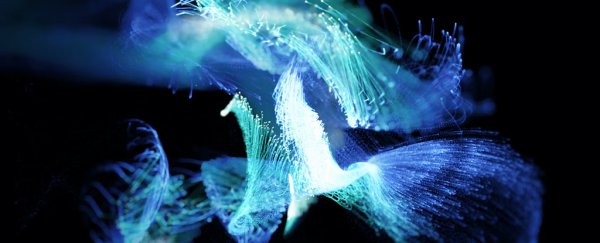A strange gap between theoretical predictions and experimental results in a major neutrino research project could be a sign of the elusive 'sterile' neutrino – a particle so quiet, it can only be detected by the silence it leaves in its wake.
It's not the first time the anomaly has been seen, adding to previous experimental data hinting at something odd in the world of neutrino research. This time around, it's been detected at the Baksan Experiment on Sterile Transitions (BEST).
Unambiguous evidence of the hypothetical sterile neutrino could provide physicists with a solid candidate for the Universe's mysterious supply of dark matter. On the other hand, it could simply all come down to a problem in the models used to describe the quirky behaviors of old school neutrinos.
Which would also make for a significant moment in the history of physics.
"The results are very exciting," says Los Alamos National Laboratory physicist Steve Elliott.
"This definitely reaffirms the anomaly we've seen in previous experiments. But what this means is not obvious. There are now conflicting results about sterile neutrinos. If the results indicate fundamental nuclear or atomic physics are misunderstood, that would be very interesting, too."
In spite of ranking among the most abundant particles in the Universe, neutrinos are notoriously difficult to catch. When you've got barely any mass, no electric charge, and only make your presence known through the weak nuclear force, it's easy to slip through even the densest of materials unimpeded.
The neutrino's ghost-like movement isn't its only interesting quality. Each particle's quantum wave morphs as it zips along, oscillating between characteristic 'flavors' that echo their negatively charged particle cousins – the electron, muon, and tau.
Studies on the oscillations of neutrinos at the US Los Alamos National Laboratory in the 1990s noticed gaps in the timing of this flip-flopping that left room for a fourth flavor, one that wouldn't make so much as a ripple in the weak nuclear field.
Cloaked in silence, the sterile flavor of neutrino would only be conspicuous by a brief pause in its interactions.
BEST is shielded from cosmic neutrino sources beneath a mile of rock in Russia's Caucasus Mountains. It features a double-chambered tank of liquid gallium which patiently collects neutrinos erupting from a core of irradiated chromium.
After measuring the amount of gallium that had transformed into a germanium isotope in each tank, the researchers could work backwards to determine the number of direct collisions with neutrinos while they were oscillating through their electron flavor.
Similar to the Los Alamos experiment's own 'gallium anomaly', researchers calculated a fifth to a quarter less germanium than expected, hinting at a deficit in the expected number of electron neutrinos.
This isn't to say with certainty that the neutrinos had briefly adopted a sterile flavor. Many other searches for the pale little particle come up empty-handed, leaving open the possibility that the models used to predict the transformations are on some level misleading.
That isn't itself a bad thing. Corrections in the basic framework of nuclear physics could have significant ramifications, potentially revealing gaps in the Standard Model which could lead to explanations for some of science's big remaining mysteries.
If this is indeed the mark of the sterile neutrino, we might at last have evidence of a material that exists in tremendous quantities, yet makes only a gravitational dimple in the fabric of space.
Whether that is the sum of dark matter or a mere piece of its puzzle would depend on further experimentation on the most ghostliest of ghost particles.
This research was published in Physics Review Letters and Physical Review C.
